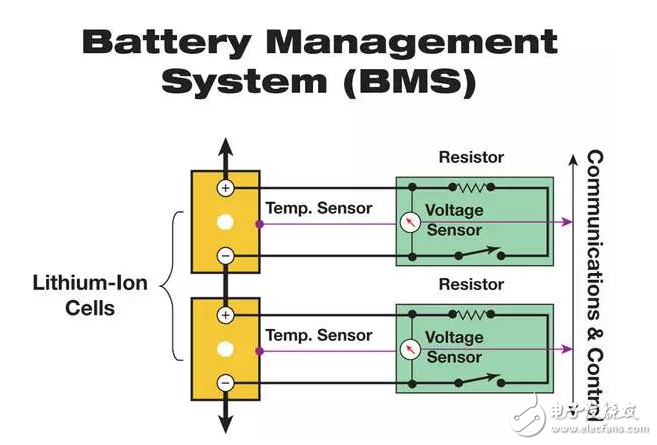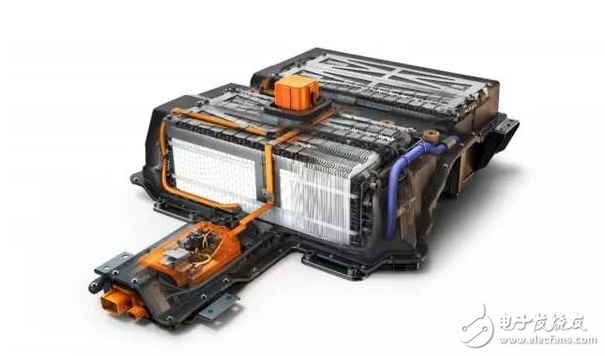
Privacy statement: Your privacy is very important to Us. Our company promises not to disclose your personal information to any external company with out your explicit permission.
In contrast, the ternary polymer lithium battery does have a better quality than the lithium iron phosphate battery, but why is its development hindered? The key to the development of new energy vehicles is also the key to the mobile digital products - the development of batteries. How to ensure that battery technology can meet the growing needs of consumers in a safe situation, not only in the automotive industry-related industry, but also in the pursuit of scientific research workers in the whole field.
When it comes to buying new energy vehicles, most consumers may think of "policy concessions" for the first time. Although this is a bit embarrassing, it is indeed quite a real reason. In the domestic sales environment, new energy vehicles have to open up the situation, not only because of the long-term mission of “environmental protection”. The advantages of new energy vehicles in terms of selling price and maintenance cost have indeed attracted most of the consumers who still use car-based costs at this stage.

However, some consumers may temporarily stop their curiosity about new energy vehicles for some reasons, because it will be overwhelmed by the various spontaneous combustion events of new energy vehicles. And this is why I wrote this article today. You must know that you don't understand the fundamentals of new energy vehicles - the advantages and disadvantages of energy modules, and if you don't understand the things you need to pay attention to during use, it is no different from buying a time bomb.
Lithium iron phosphate battery: mature but not enough
Lithium iron phosphate electrode material is currently the safest lithium ion battery cathode material, and its cycle life is more than 2000 times. Standard charging (5 hour rate) can be used to achieve 2000 cycles, coupled with the maturity of the industry. The resulting price threshold and technology decline have led many manufacturers to use lithium iron phosphate batteries for various reasons. It can be said that the rise of new energy vehicles has an inseparable relationship with lithium iron phosphate batteries.
However, lithium iron phosphate batteries have a fatal disadvantage, that is, poor low temperature performance, even if they are nano-sized and carbon coated, this problem is not solved. Studies have shown that a battery with a capacity of 3500 mAh, if operated in a -10 ° C environment, after less than 100 charge and discharge cycles, the power will be abruptly attenuated to 500 mAh, basically scrapped. This is indeed not a good thing for China, which has a vast territory and a relatively low temperature in winter.

In addition, the preparation cost of the material and the manufacturing cost of the battery are high, the battery yield is low, and the consistency is poor, which is also an important reason that the endurance of many pure electric vehicles cannot reach the nominal value. Therefore, we can see that there are quite a few new energy vehicles in China (whether pure electric or hybrid electric), or some relatively cheap new energy vehicles, which will choose lithium iron phosphate batteries for different reasons. It can be said that the use of lithium iron phosphate batteries has an indelible foundation for the mass production and promotion of new energy vehicles.
In contrast, the ternary polymer lithium battery does have a better quality than the lithium iron phosphate battery, but why is its development hindered?
Ternary polymer lithium battery: the future of restlessness
The ternary polymer lithium battery refers to a lithium battery using a nickel-cobalt-manganate (Li(NiCoMn)O2) ternary positive electrode material for the positive electrode material, and a ternary composite positive electrode material precursor product, which is a nickel salt, a cobalt salt, a manganese salt. As raw materials, the ratio of nickel-cobalt-manganese can be adjusted according to actual needs. Ternary lithium batteries have higher energy density, but safety is often suspect.
The reason for this is that even if the two materials decompose when they reach a certain temperature, the ternary lithium material will decompose at a lower temperature of about 200 degrees, and the lithium iron phosphate material is around 800 degrees. Moreover, the chemical reaction of the ternary lithium material is more intense, and oxygen molecules are released, and the electrolyte rapidly burns under the action of high temperature, and a chain reaction occurs. To put it simply, the ternary lithium material is more likely to catch fire than the lithium iron phosphate material. However, it should be noted that we are referring to materials, not batteries that have become finished products.
Because ternary lithium materials have such safety hazards, manufacturers are also trying to stop the direction of accidents. According to the easy pyrolysis characteristics of ternary lithium materials, manufacturers will have a lot of problems in over-charge protection (OVP), over-discharge protection (UVP), over-temperature protection (OTP), and over-current protection (OCP). effort. Therefore, the spontaneous combustion incident should be more about whether the functions of the manufacturers in these links are in place, rather than simply squandering food.
So what is the current use of these two batteries? Let's focus on a set of data. In November last year, the installed capacity of electric bus for lithium iron phosphate battery accounted for 64.9%, and the installed capacity for ternary lithium battery was only 27.6%. In contrast, in the pure electric passenger vehicle market, the installed capacity of the ternary lithium battery in November last year exceeded 76%.

It can be seen that the advantage of the higher energy density of the ternary lithium battery should be born as a new energy storage device for the future. Now that the relevant security incidents occur, it is a good thing when the popularity of new energy vehicles is still in its infancy. In order to achieve the dual goals of seizing the market and obtaining policy support, many new energy vehicle-related enterprises have relaxed technical requirements and mass-produced energy components that cannot withstand repeated use for a long time. The environment in which a car works is harsh. When these parts are used for a long time, the cause of a safety accident is inevitably greatly increased.
Therefore, we can think that Zhang Xiangmu, director of the Equipment Department of the Ministry of Industry and Information Technology, has issued an assessment on the safety performance of the ternary lithium battery bus. It is the intention of the relevant state departments to define a standard from the policy level. To promote the emergence of industry standards. Whether it is for consumers or manufacturers, it has a very positive meaning in the future. Therefore, there is no need to worry about the safety accident of the ternary lithium battery on the Internet. The materials are dangerous. The key is how to control it.
Batteries for different types of new energy vehicles: uniform requirements
After talking about the battery, I believe that for the situation of new energy vehicles, we need to briefly introduce the role of the battery in the vehicle. After all, consumers who buy pure electric vehicles still account for a small number, and more friends are concerned about hybrid vehicles. Hybrid vehicles can be divided into three types: ordinary hybrid vehicles, plug-in hybrid vehicles and extended-range hybrid vehicles.
The arrangement of the battery capacity in the above three types of cars is from the small to the large, just like a conventional hybrid vehicle < plug-in hybrid vehicle ≤ extended-range hybrid vehicle. The batteries of ordinary hybrid vehicles are not rechargeable, the batteries are used for starting and rapid acceleration; the batteries of plug-in hybrid vehicles are increased in capacity and rechargeable on the basis of ordinary hybrid vehicle batteries, with better acceleration and fuel economy. Capability; while the engine of the extended-program hybrid car is used to drive the motor to generate electricity, and is more inclined to pure electric vehicles.
These three hybrid vehicle models have their own advantages and disadvantages. At this stage, the main force is also based on ordinary hybrid power and plug-in hybrid power. It is precisely because the characteristics of the three hybrid vehicles have commonalities between battery life and working environment. Therefore, consumers should pay attention to relevant parameters, such as battery material and environment, regardless of the model of hybrid vehicle. And the best working conditions, etc. At the same time, manufacturers should strictly control battery quality and related security settings during the design process to ensure safe and efficient use.
The key to the development of new energy vehicles is whether their experience can rival or even surpass the traditional internal combustion engine vehicles, and whether there is a better advantage in the purchase and after-sales links. In my opinion, the key to the development of new energy vehicles is also the key to the development of mobile digital products - the development of batteries. How to ensure that battery technology can meet the growing needs of consumers in a safe situation is not only the automotive industry-related industry personnel, but also the pursuit of scientific research workers in the whole field.
October 28, 2024
September 11, 2024
October 27, 2022
September 20, 2022
July 29, 2024
July 29, 2024
この仕入先にメール
October 28, 2024
September 11, 2024
October 27, 2022
September 20, 2022
July 29, 2024
July 29, 2024

Ms. LISA CHEN
電話番号:
+86-0755-28346529
Fax:
E-mail:
モバイルサイト


Privacy statement: Your privacy is very important to Us. Our company promises not to disclose your personal information to any external company with out your explicit permission.

Fill in more information so that we can get in touch with you faster
Privacy statement: Your privacy is very important to Us. Our company promises not to disclose your personal information to any external company with out your explicit permission.